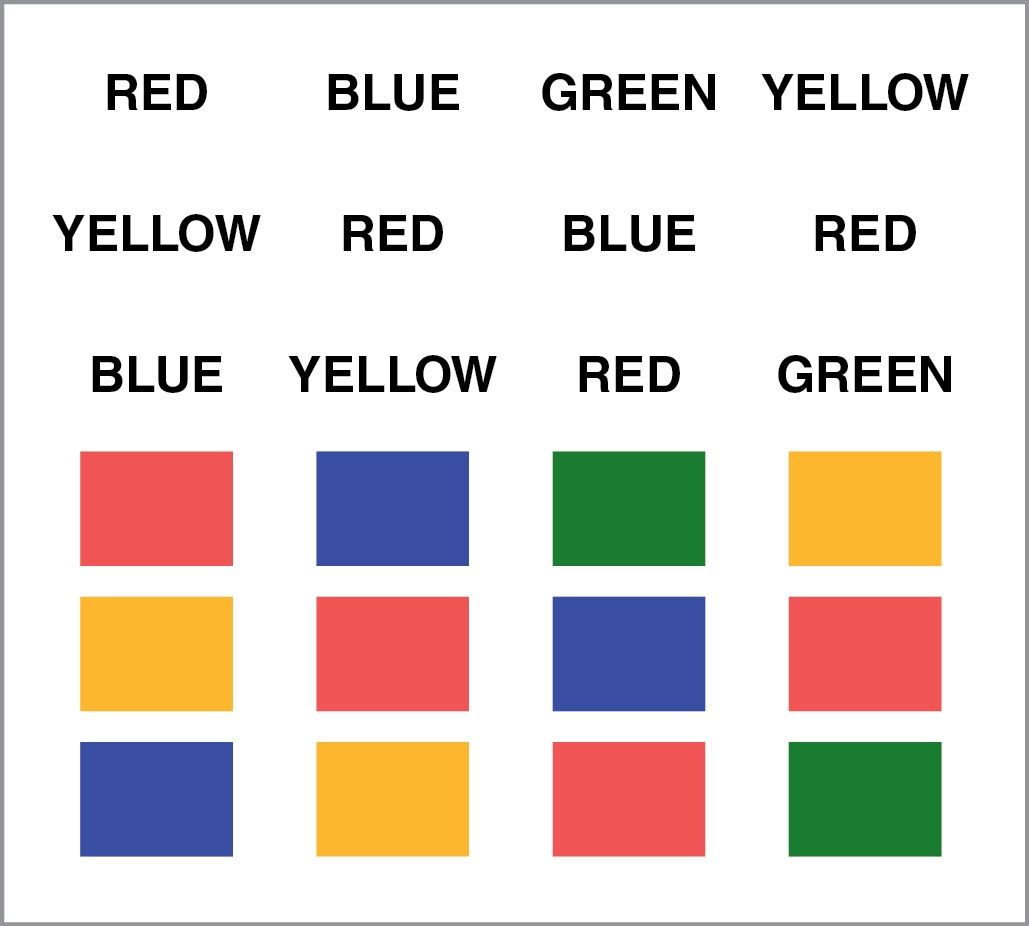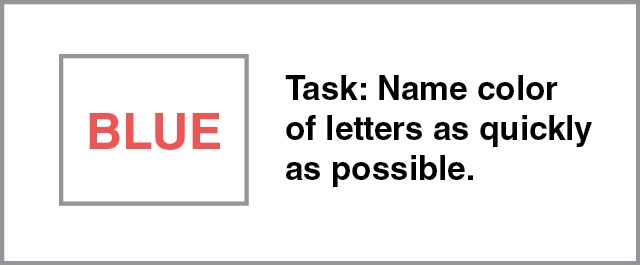The Stroop Color-Word Task is a classic experiment on interference in thinking. On the next screen, we will simulate this experiment with four lists of words. For the first list, you should read the words. For the other three lists, you should name the colors in which the words are displayed. We will measure how quickly you can perform the task.
| Example of “Read the Words” task: |
blue
orange green
|
| Correct response: You should say “blue, orange, green” as quickly as you can. | |
| Example of “Name the Colors” task: |
green
purple white
|
| Correct response: You should say purple, blue, orange as quickly as you can. | |
If you choose the standard version of the task, you will need to speak your responses "out loud," so be sure that you are in a location where your voice will not disturb others. Each list will appear as soon as you start the timer. When you have finished the list, stop the timer and move on to the next list.
If you choose the quiet version, you will respond on the keyboard rather than by speaking.





